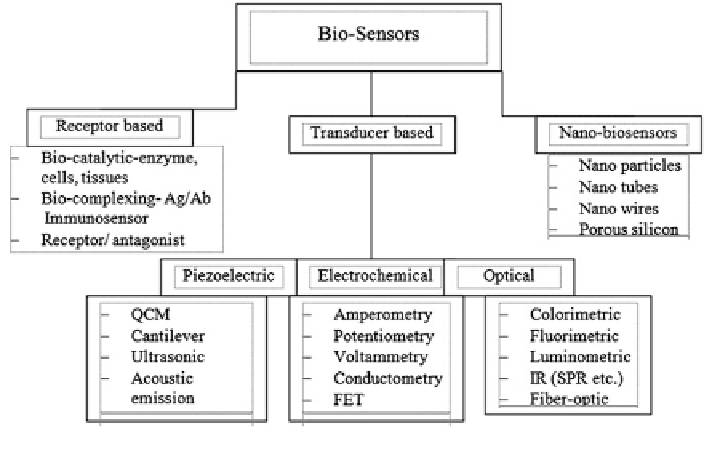Biomedical Engineering Reference
In-Depth Information
Fig. 6.6
Classification of biosensor (transduction base)
Classification based on the method of transduction
This mainly works on the principle ''detection of the steady state concentration
of the species formed, lost or inhibited by the transducer.'' Biocatalysts used by the
type of biorecognition element utilized (antibody, enzymes, nucleic acids, and
whole cells) as shown in Fig.
6.6
.
Classification based on the mode of delivery
1. Continuous/Flow mode They involve the uninterrupted measurements of the
analyte. Reactions take place during the flow of samples or biorecognition
element. Pumps are normally used to flow samples.
2. Intermittent/Batch mode They involve the introduction of the analyte into the
flow stream.
Ideal Biosensor Characteristics
1. Sensitivity: high DS/Dc
analyte
(S = signal).
2. Easy calibration (with standards).
3. Linear Response: DS/Dc
analyte
constant over large concentration range.
4. Background Signal: low noise, with ability for correction (e.g., 2nd fiber sensor
head lacking biological species to measure background O
2
changes).
5. No hysteresis—signal independent of prior history of measurements.
6. Selectivity—response only to changes in target analyte concentration.
7. Long-term stability—not subject to fouling, poisoning, or oxide formation that
interferes with signal; prolonged stability of biological molecule.
8. Dynamic response—rapid response to variation in analyte concentration.

Search WWH ::

Custom Search